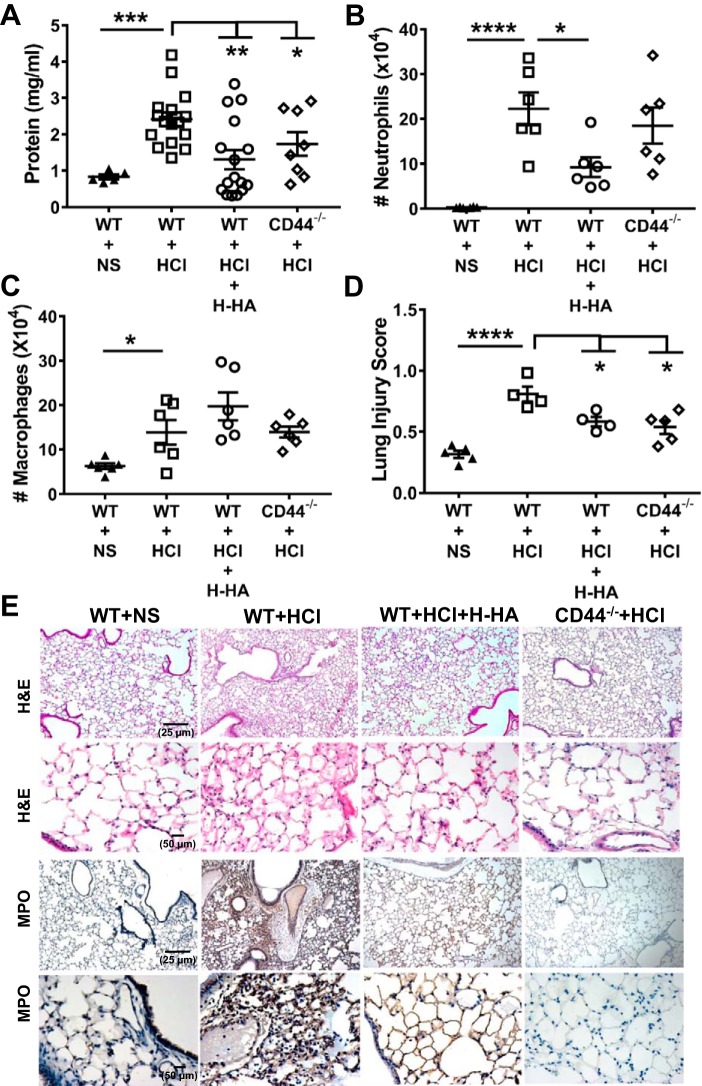Fig. 3.
High-molecular weight hyaluronan (H-HA) treatment or lack of CD44 protein attenuates persistent lung injury and inflammation after HCl instillation. BALF protein (A), neutrophils (B), macrophages (C), and lung injury score (D) in WT or CD44−/− mice at 24 h post-HCl or NS; WT mice were also treated with H-HA (Yabro) as described in materials and methods. Each dot represents a different mouse; means ± SE. *P < 0.05; **P < 0.01; ***P < 0.001; ****P < 0.0001, compared with corresponding WT + HCl by one-way ANOVA followed by Bonferroni post hoc comparisons; n = 6–16 for each group. E: hematoxylin and eosin staining of lung tissue at 24 h after HCl instillation shows the presence of hyaline membranes and protein exudates in alveolar spaces, as well as myeloperoxidase (MPO) staining (3rd row: ×10; 4th row: ×40) in WT mice. HCl instillation-induced injury was decreased by H-HA treatment (3rd column); CD44−/− exhibited less injury, as compared with WT mice, when instilled with HCl (4th column). Typical images were reproduced 4–5 times.

